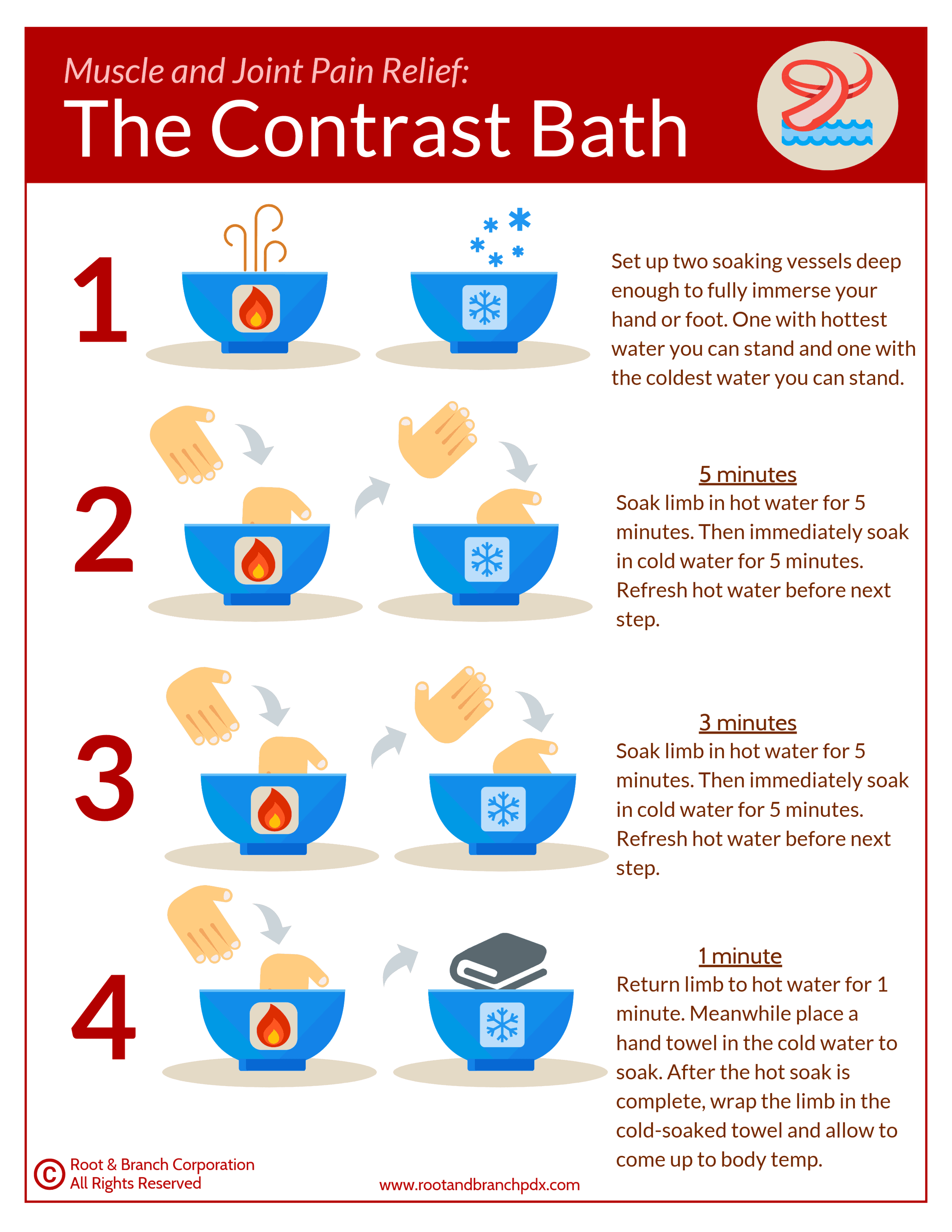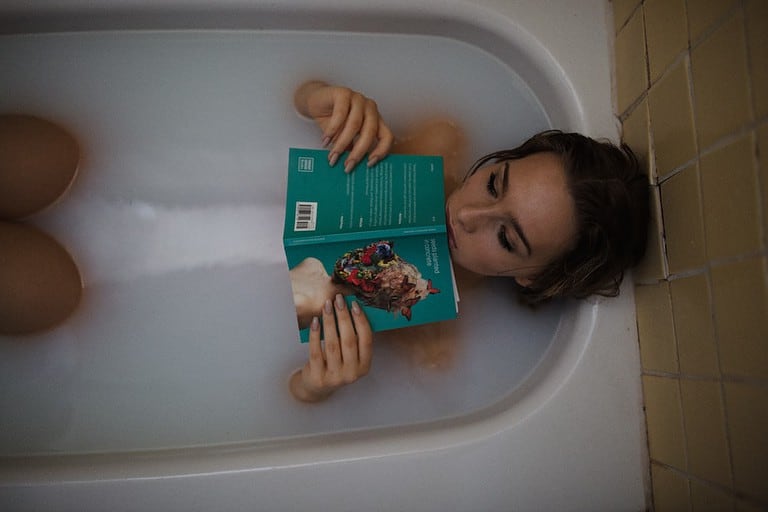How to Do Contrast Therapy: A Guide for the Modern Family
Contrast therapy is a term that is becoming increasingly popular as people search for natural, holistic ways to improve their health and well-being. But what exactly does it mean? And how to do contrast therapy?
Through this article, we will explore the meaning of contrast therapy, how to do contrast therapy, its benefits in treating certain conditions, and clinical evidence supporting its use.
So if you’re looking for actionable guides on self-care resources to lead a healthy lifestyle – let’s dive into understanding how to do contrast therapy.
Table of Contents
What is Contrast Therapy?
Contrast therapy (also known as contrast bath therapy or hydrotherapy) is a type of physical therapy that utilizes the application of hot and cold temperatures in order to increase blood flow to an area or tissue. This can help reduce inflammation and promote healing. The temperature changes are usually applied through contrast baths which involve soaking in warm baths or using ice packs on affected areas.
How Does Contrast Therapy Work?
Contrast baths work as therapy for a lot of different ailments. Among the many potential benefits of contrast water therapy are:
- Improved circulation brings oxygenated blood to injured tissues.
- Reduced swelling due to increased lymphatic drainage.
- Decreased muscle spasms.
- Improved range of motion.
- Relief from chronic pain caused by inflammation.
- Faster healing process after injury or surgery.
- Enhanced immune system function.
- Better sleep quality due to relaxation effects.
- Reduction in stress levels due to its calming effect.
Types of Contrast Therapy
There are two main types of contrast therapies – active and passive.
Active contrast bath therapy works by actively changing between hot and cold temperatures while passive contrast therapy involves maintaining one temperature for a period before switching over without any movement involved from the patient’s side (e.g., immersing oneself alternately into hot/cold baths).
Both types have their own advantages depending on what condition needs treatment but generally speaking, both will provide similar results if done correctly under professional supervision.
How to Do Contrast Therapy
Before beginning contrast therapy, it is important to consult with your healthcare provider or physical therapist about the best approach. Make sure you have all the necessary supplies such as towels, ice packs/hot packs, and water bottles (for temperature regulation) before starting treatment.
When doing contrast baths, choose a comfortable space where you won’t be disturbed during your session.
Once everything is set up, begin by applying heat or ice depending on what type of condition you are treating (heat may be more appropriate for chronic conditions while cold may be better suited for acute injuries). Hold each temperature application in place until the area becomes numb then switch back and forth between hot and cold applications three times per cycle (each cycle should last around 3 minutes). Make sure not to exceed 10 minutes total time in any one session as this could lead to skin irritation or other complications.
When performing contrast therapy, it is important not to apply too much pressure when using either hot or cold treatments as this could cause tissue damage over time if done incorrectly. Additionally, always use protective barriers like towels when applying heat/cold treatments directly onto the skin so that burns do not occur from prolonged exposure to extreme temperatures. Finally, make sure that after each session you drink plenty of fluids so that your body does not become dehydrated due to sweating caused by rapid changes in temperature during treatment sessions.

(Source)
Common Conditions Treated with Contrast Therapy
Musculoskeletal Conditions Treated with Contrast Therapy
Musculoskeletal conditions such as arthritis, tendonitis, bursitis, and sprains/strains can all be treated effectively using contrast therapy. Alternating between hot and cold compresses helps reduce the inflammation associated with these types of injuries which in turn reduces pain levels significantly. In addition to reducing inflammation, it also increases circulation which aids in healing the affected area faster than without treatment.
Cardiovascular Conditions Treated with Contrast Therapy
Cardiovascular diseases such as high blood pressure or coronary artery disease can benefit from contrast therapy by improving circulation throughout the body while helping to lower blood pressure levels naturally over time. Hot water immersion followed by cold water immersion stimulates vasodilation (widening) of the arteries resulting in improved oxygenation of tissues throughout the body leading to improved overall health outcomes for those suffering from cardiovascular diseases or disorders.
Neurological Conditions Treated with Contrast Therapy
Neurological conditions such as Parkinson’s Disease or Multiple Sclerosis are often accompanied by chronic muscle spasms, which can be reduced through regular use of contrast therapy treatments. Alternating between hot and cold compresses on affected areas helps to relax tense muscles while increasing circulation, providing relief from symptoms associated with neurological disorders like tremors or stiffness in joints/muscles due to lack of movement caused by these illnesses/disorders.
Clinical Evidence Supporting the Use of Contrast Therapy
Treating Musculoskeletal Conditions
Research suggests that contrast therapy can be beneficial for treating musculoskeletal conditions such as arthritis, tendonitis, bursitis, sprains/strains, plantar fasciitis, and other chronic pain syndromes. In one study published in the Journal of Physical Therapy Science (2015), participants with knee osteoarthritis experienced significant improvements in joint flexibility after undergoing two weeks of contrast therapy treatments.
Treating Cardiovascular Conditions
Studies have also shown that contrast therapy may be effective at improving cardiovascular health by increasing blood flow to the heart muscle and reducing inflammation associated with coronary artery disease. A study published in Evidence-Based Complementary & Alternative Medicine (2014) found that patients who underwent 12 weeks of regular cold water immersion showed improved arterial stiffness compared to those who did not receive any treatment at all.
Treating Neurological Conditions
Recent research indicates that contrast therapy may also help improve symptoms associated with neurological disorders such as multiple sclerosis (MS). One study published in BMC Neurology (2016) found that MS patients who underwent six weeks of regular hot/cold hydrotherapy sessions reported reduced fatigue levels compared to those who did not receive any treatment at all.
Conclusion
Contrast therapy is a safe and effective way to treat a variety of conditions. How to do contrast therapy? It can be used alone or in combination with other treatments, such as physical therapy, medications, and lifestyle changes.
While there is still more research needed to determine the long-term effects of contrast therapy, it has been shown to provide short-term relief from pain and inflammation. If you are looking for an alternative treatment option that may help reduce your symptoms without the use of medication or surgery, then do consider trying contrast therapy.
Do you want to take your health and well-being into your own hands? Look no further than Smart Living Now! We provide easy-to-follow resources for contrast therapy, an effective self-care practice that can help improve physical and mental health.
With our helpful guides, you’ll be able to find the right balance of hot and cold temperatures in order to boost energy levels, reduce stress, increase circulation, detoxify organs, and more. Take control of your wellness today with Smart Living Now!







